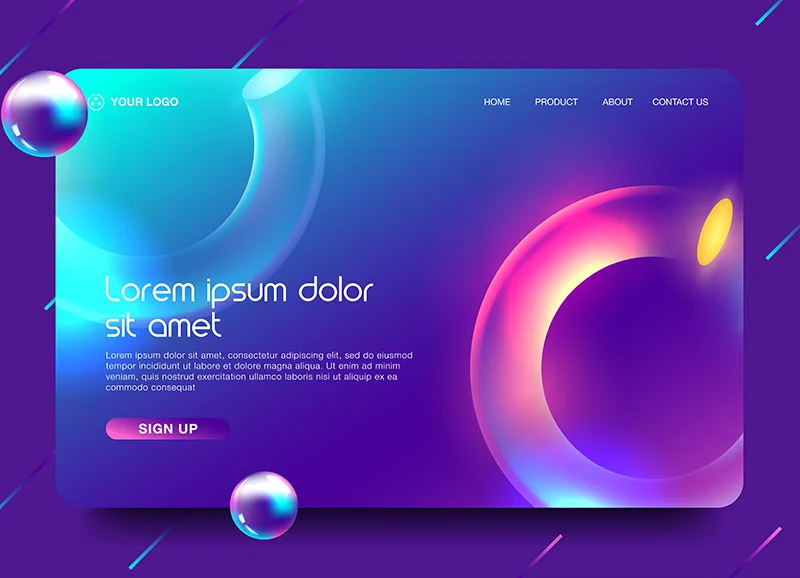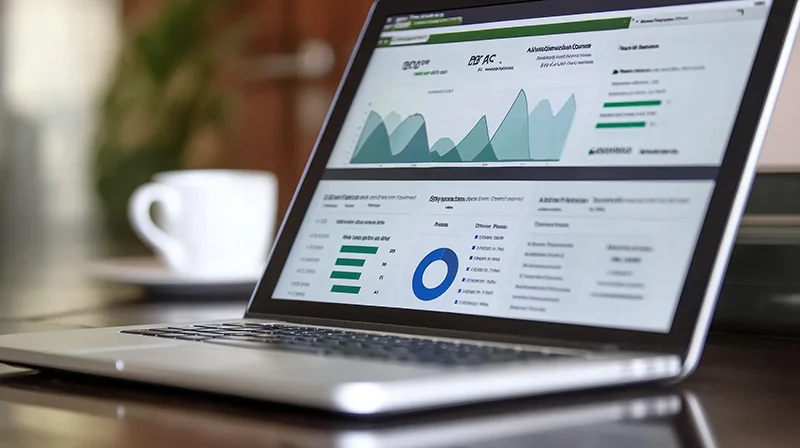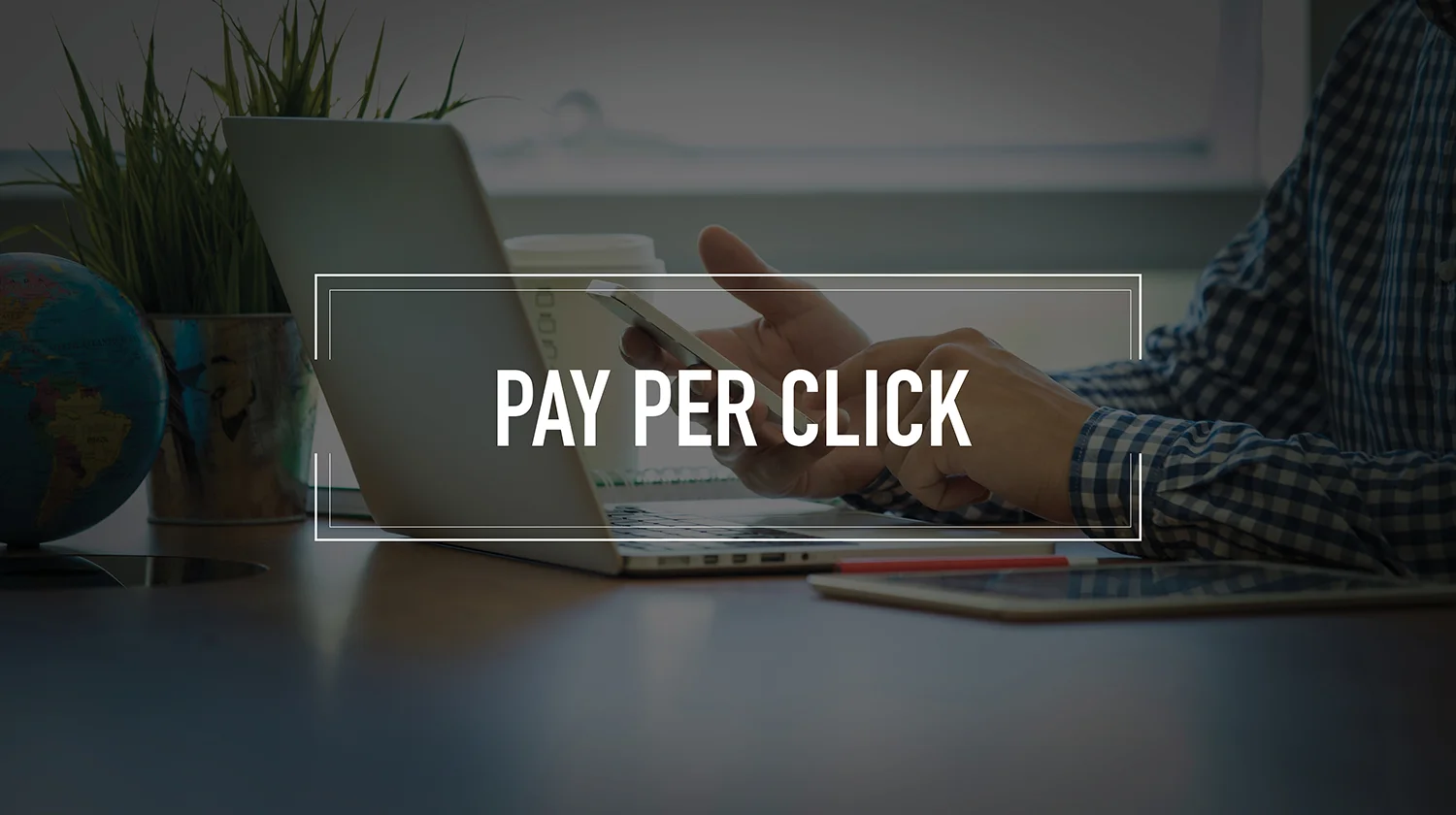- The Bedrock of Success: Understanding the Core Components of PPC Campaign Management
- 1. Strategic Keyword Research and Selection: The Language of Your Customers
- 2. Compelling Ad Copy and Creative Development: The Art of the Click
- 3. Strategic Ad Group and Campaign Structure: The Blueprint for Organization
- 4. Meticulous Bid Management and Budget Allocation: The Science of Spending
- 5. Landing Page Optimization: The Path to Conversion
- 6. Rigorous Performance Tracking and Analysis: The Power of Data
- The Multifaceted World of PPC: Platforms and Strategies
- The Undeniable Benefits of Professional PPC Campaign Management
- What is PPC Campaign Management?: A Continuous Cycle of Improvement
- The Future of PPC: AI and Automation
- Gravitate One: Your Partner in PPC Success
In the ever-evolving landscape of digital marketing, businesses are constantly seeking effective strategies to connect with their target audience and drive meaningful results. Among the most powerful tools in a marketer’s arsenal is pay-per-click (PPC) advertising. But launching a PPC campaign is only the first step. The real key to unlocking its immense potential lies in a strategic and ongoing process. This brings us to the crucial question for any business looking to thrive online: What is PPC campaign management?
Simply put, PPC campaign management is the comprehensive and continuous process of overseeing and optimizing a company’s PPC campaigns to achieve specific business objectives. It’s not a “set it and forget it” endeavor; rather, it’s a dynamic and data-driven discipline that requires expertise, vigilance, and a deep understanding of the intricate workings of platforms like Google Ads and social media advertising channels. Effective management ensures that every dollar spent on paid ads delivers the maximum possible return on investment (ROI), transforming clicks into conversions and browsers into loyal customers. This in-depth guide will walk you through every facet of this essential marketing function, from the foundational elements to advanced strategies that can propel your business to new heights.
The Bedrock of Success: Understanding the Core Components of PPC Campaign Management

To truly grasp what is PPC campaign management, it’s essential to break it down into its core components. Each of these elements plays a vital role in the overall health and performance of your online advertising efforts, working in concert to drive traffic, generate leads, and increase sales. Think of it as building a high-performance engine. Every piston, gear, and belt must function perfectly for the machine to operate at peak efficiency. A failure in one area, such as poor keyword research, can cause the entire system to underperform, wasting your valuable advertising budget and missing out on crucial opportunities for growth.
1. Strategic Keyword Research and Selection: The Language of Your Customers
At the very heart of most PPC campaigns, particularly those on search engines like Google and Bing, lies the art and science of keyword research. This is the meticulous and ongoing process of identifying the specific words and phrases your potential customers are typing into search engines when looking for the products or services you offer. It’s about more than just finding popular terms; it’s about delving into the user’s mindset, understanding their intent, and matching that intent with highly relevant and persuasive ad messaging. This foundational step dictates your audience, ad relevance, and ultimately, your cost-per-acquisition, making it one of the most critical stages in the entire management process. Get this foundational step wrong, and your entire campaign structure could be built on sand, leading to an uphill battle for visibility and conversions.
Understanding the Search Term: The Voice of the Customer

It’s crucial to differentiate between a keyword and a search term (also known as a search query). A keyword is the abstraction you bid on in your ads campaign; it’s what you tell Google you want to target. A search term is the exact string of words a user actually types into the search bar. Effective PPC management services will continuously and obsessively analyze the Search Terms report within Google Ads. This report provides direct insight into your customers’ thoughts and needs, allowing you to refine your keyword list to better match user language. By proactively adding irrelevant search terms as negative keywords, you not only prevent wasted ad spend but also improve your click-through rate (CTR) and Quality Score over time.
Mastering Keyword Match Types: Controlling Your Reach
Google provides several keyword match types that allow you to control how closely a user’s search term must match your keyword for your ad to be eligible to show. Understanding and strategically using these match types is fundamental to balancing reach with relevance and managing your budget effectively.
- Broad Match: This is the most flexible match type, now powered heavily by Google’s AI to understand semantic relationships. It can be a powerful tool for uncovering new, unexpected query patterns, especially when paired with smart bidding strategies that can discern converting traffic from irrelevant searches. However, without careful monitoring, broad match can quickly deplete a budget by matching to tangentially related, non-converting searches, making it a high-risk, high-reward option.
- Phrase Match: Offering a blend of control and reach, phrase match ensures your ads appear for searches that include the meaning of your keyword. This is often the workhorse match type for many campaigns, capturing a wide array of relevant queries without the extreme unpredictability of broad matches. It is particularly effective for targeting long-tail keywords where user intent is more specific.
- Exact Match: As the most restrictive match type, exact match gives you the ultimate control, showing your ads only for searches with the identical meaning or intent as your keyword. This typically results in the highest CTR and conversion rate, as the ad and landing page can be perfectly tailored to the specific query. While its volume is lower, the traffic quality from exact match keywords is often unparalleled, making it ideal for your most valuable, high-intent terms.

- Negative Keywords: This is arguably one of the most powerful tools for optimizing a campaign’s profitability. An extensive negative keyword list acts as a shield, preventing your ads from showing on irrelevant searches that may include your keywords but have a different intent. For instance, a company selling software would add negatives like “free,” “jobs,” or “reviews” to filter out non-commercial traffic. Continuously building this list based on the search term report is a fundamental task in ongoing PPC management.
The Tools of the Trade: Your Keyword Research Arsenal
Professionals never go into the keyword research process blind. They utilize a variety of powerful tools to gather data, analyze the competitive landscape, and make informed decisions. These platforms provide critical data points like search volume trends, allowing you to anticipate seasonal demand for your products or services. Furthermore, they offer insight into keyword difficulty and the competitive landscape, helping you identify niche opportunities your competitors may have overlooked. This data-driven approach removes guesswork and builds a campaign foundation based on market realities.
2. Compelling Ad Copy and Creative Development: The Art of the Click
Once you’ve identified your target keywords, the next step is to craft persuasive ad copy and engaging creative that entices users to click. Your PPC advertisements are your digital storefront, a critical first touchpoint that can either capture a user’s interest or be completely ignored. This copy must not only align perfectly with the user’s search term but also clearly differentiate your value proposition from the competitors appearing right alongside your ad. Effective ad copy speaks directly to the user’s needs and motivations, creating an immediate connection that bridges the gap between their search and your solution.
The Anatomy of a Winning Ad

- Headline: As the most prominent part of your ad, the headline must immediately grab the user’s attention and confirm they are in the right place. Best practices involve including your primary keyword, asking a question that resonates with the user’s pain point, or highlighting a unique benefit like “Free Shipping” or “50% Off Today.” With Responsive Search Ads, you provide multiple headlines that Google’s AI then combines to find the optimal message for each individual user.
- Description: This section allows you to provide more detail, build trust, and drive the user toward a specific action. An effective description goes beyond listing features; it sells benefits and solutions to the user’s problem. It should be concise, compelling, and reinforce the primary message of the headlines while seamlessly integrating a strong call-to-action (CTA).
- Display URL: While it shows your website address, the display URL can be customized with vanity paths to enhance relevance and trust. For example, instead of www.yourstore.com/category/product123, you can display www.yourstore.com/Running-Shoes, reinforcing the keyword and making the link look cleaner. This small detail can have a surprising impact on a user’s decision to click.
- Ad Extensions: These are powerful additions that provide additional information and increase the physical size of your ad on the search results page. Utilizing extensions like sitelinks, callouts, structured snippets, price extensions, and image extensions can dramatically improve your ad’s visibility and CTR. They offer more reasons for a user to choose your ad, providing quick links to relevant pages or highlighting key selling points before the user even clicks.
A/B Testing for Continuous Improvement

Effective PPC management involves relentless A/B testing, which is the scientific method applied to advertising. By creating multiple ad variations and showing them to different segments of your audience, you can gather data on which message performs best. This isn’t a one-time task; it’s a continuous cycle of creating, testing, analyzing, and iterating to constantly refine your messaging. You should test everything from different value propositions in your headlines to varying levels of urgency in your CTA to ensure you are always maximizing your click-through and conversion rates.
Visuals in the Age of Social Media
For PPC campaigns on social media and the display network, compelling visuals are not just important—they are everything. In a fast-scrolling feed, a high-quality, eye-catching image or video is your only chance to stop a user and command their attention. The creative must be tailored to the platform’s specific dimensions and user expectations, whether it’s a polished video for YouTube or an authentic-looking image for an Instagram story. These visuals must work in harmony with the ad copy to tell a cohesive story and drive the desired action.
3. Strategic Ad Group and Campaign Structure: The Blueprint for Organization
A well-structured account is the foundation of an efficient and scalable PPC campaign, acting as the central nervous system for all your advertising efforts. Ad groups are a key organizational component within a Google Ads campaign, grouping together a small, tightly-knit collection of keywords that share a common, specific theme. This organization is not merely for tidiness; it is a strategic imperative that directly impacts your costs and results. A logical structure allows for precise control over messaging, budgeting, and performance analysis, making it easier to identify what’s working and what isn’t.
The Importance of Granularity

By creating tightly-themed, granular ad groups, you can ensure there is an extremely high degree of relevance between the keywords, the ad copy, and the landing page. This “message match” is precisely what Google’s Quality Score algorithm is designed to reward. A higher Quality Score signals to Google that your ad is a great match for the user’s search, which in turn leads to a better ad placement at a lower cost-per-click. This increased relevance also enhances the user experience, leading to higher click-through rates and better overall campaign performance.
Logical Campaign Hierarchy
At a higher level, campaigns should be structured in a way that reflects your business goals and marketing strategy. Common and effective structuring methods include segmenting campaigns by product or service categories, different stages of the marketing funnel (prospecting vs. remarketing), or targeting specific geographic locations. For an e-commerce store, this might mean separate campaigns for “Men’s Shoes” and “Women’s Apparel.” This hierarchical approach allows you to allocate budgets with precision, directing more spend to your most profitable areas while gathering clear, uncontaminated performance data for each segment of your business.
4. Meticulous Bid Management and Budget Allocation: The Science of Spending
Bid management is the dynamic process of setting and adjusting the maximum amount you’re willing to pay for a single click on your ad. This is a delicate and continuous balancing act that requires a deep understanding of your campaign goals, keyword-level profitability, and the ever-shifting competitive landscape. It’s where the art of strategic thinking meets the science of data analysis to ensure every dollar is spent as effectively as possible. Effective bidding is not about getting the most clicks, but about getting the most valuable clicks within your budget.
Manual vs. Automated Bidding

- Manual Bidding: This strategy gives you the ultimate control, allowing you to set specific bids at the ad group or even individual keyword level. It is often preferred when you have a smaller campaign with predictable performance or when you need to react quickly to market changes that an algorithm might be slow to adapt to. This hands-on approach requires significant time and expertise to manage effectively but offers unparalleled precision.
- Automated Bidding: Leveraging Google’s advanced machine learning, automated bidding strategies can optimize your bids in real-time based on a vast array of signals for each and every auction. Strategies like Target CPA (Cost-Per-Acquisition) or Target ROAS (Return On Ad Spend) allow you to optimize for specific conversion goals, making it a powerful tool for scaling campaigns efficiently. To be successful, these strategies require a healthy volume of conversion data to learn from and work best when guided by an experienced human manager.
Budget Pacing and Allocation
Effective PPC management involves more than setting a monthly budget. It requires diligent monitoring of your daily and hourly ad spend to ensure proper pacing. This prevents you from exhausting your budget early in the month (or day) and missing out on valuable traffic. Furthermore, strategic budget allocation means actively shifting funds from underperforming campaigns and ad groups to your top performers. This dynamic reallocation process maximizes your overall ROI by ensuring your budget is always fueling the most profitable areas of your account.
5. Landing Page Optimization: The Path to Conversion

Your landing page is arguably the most critical component in the conversion process. It is the destination where users “land” after being persuaded to click your ad. A poorly optimized, confusing, or slow-loading landing page will quickly undo all the hard work and expense invested in your keyword selection and ad copy. It is the final and most important step in turning a click into a customer. Think of your ad as the promise and your landing page as the fulfillment of that promise.
Relevance is Key: The Power of Message Match
The content, headline, and offer on your landing page must be highly relevant and consistent with the ad copy and the keyword the user searched for. This seamless experience, known as “message match,” reassures the user they have come to the right place, reducing bounce rates and increasing the likelihood of conversion. If a user clicks an ad for “red running shoes” and lands on a generic shoe page, they are likely to leave immediately. A dedicated landing page that prominently features red running shoes creates a frictionless path to purchase.
Elements of a High-Converting Landing Page
- Compelling Headline: The headline must immediately reinforce the message from the ad and confirm the page’s purpose.
- Clear and Concise Copy: The text should focus on the benefits of your offer, using bullet points and scannable text to highlight value.
- Strong Call-to-Action (CTA): The CTA button should be visually prominent and use action-oriented text (e.g., “Get Your Free Quote Now” instead of “Submit”).
- Engaging Visuals: High-quality, relevant images or a short video can dramatically increase engagement and help explain your offer.
- Trust Signals: Elements like customer testimonials, reviews, partner logos, and security badges (for e-commerce) are crucial for building credibility and overcoming user skepticism.
- Lead Capture Form: Keep forms as simple as possible by only asking for the most essential information; a long, complicated form is a major deterrent to conversion.
Improving Conversion Rate

Conversion rate optimization (CRO) is a fundamental and ongoing part of PPC campaign management. This involves using tools like Google Optimize or Hotjar to form hypotheses about user behavior and then systematically A/B testing different elements of your landing page. You can test variations of your headline, CTA button color, form length, or page layout to identify the combination that drives the most conversions. A small uplift in your conversion rate can have a massive impact on your campaign’s overall profitability.
6. Rigorous Performance Tracking and Analysis: The Power of Data
You simply cannot manage what you do not measure. Continuous, rigorous performance tracking and data analysis are the lifeblood of successful PPC campaign management, transforming it from a guessing game into a data-driven science. This involves setting up accurate conversion tracking to measure the actions that truly matter to your business. Without clean, reliable data, any optimization efforts are merely shots in the dark. It is this analytical engine that powers the continuous cycle of improvement.
Key Performance Indicators (KPIs)
While there are dozens of metrics available, focusing on the right KPIs is essential for efficient analysis.
- Impressions: The number of times your PPC advertisements are shown.
- Clicks: The number of times your ad is clicked after being shown.
- Click-Through Rate (CTR): The percentage of impressions that result in a click (Clicks ÷ Impressions), a key indicator of ad relevance.
- Cost-Per-Click (CPC): The average amount you pay per click.
- Conversion Rate: The percentage of clicks that cause a desired action, such as a sale or lead, which is the ultimate measure of your landing page and offers effectiveness.
- Cost-Per-Acquisition (CPA): The total cost divided by the number of conversions, telling you exactly how much you are paying to acquire a new customer.
- Return on Ad Spend (ROAS): The total revenue generated from your ads divided by the total ad spend, providing a clear measure of your campaign’s profitability.
Reporting and Insights

Expert PPC management services provide regular, detailed reports that go far beyond just presenting raw data in a spreadsheet. They translate complex data into a clear narrative about your campaign’s performance, highlighting key trends, successes, and areas for improvement. Crucially, these reports should offer actionable insights and a clear list of recommendations for the next steps in optimizing the campaign. This transforms reporting from a historical record into a forward-looking strategic tool that drives future success.
The Multifaceted World of PPC: Platforms and Strategies
While Google Ads is the best-known pay-per-click (PPC) platform, the world of online advertising extends far beyond search engines. A comprehensive PPC campaign management strategy often incorporates a multi-platform approach.
Social Media Advertising: Connecting with Audiences in Their Digital Hangouts
Platforms like Facebook, Instagram, LinkedIn, X (formerly Twitter), and Pinterest offer powerful PPC advertisements options. The key advantage of social media advertising is the ability to target users based on their demographics, interests, behaviors, and connections. This allows for highly granular targeting that can be incredibly effective for building brand awareness and driving conversions.
Display Advertising: Visual Storytelling Across the Web
Display ads are the visual banner ads you see on websites across the internet. The Google Display Network, for example, reaches over 90% of internet users worldwide. While often having a lower CTR than search ads, display advertising is excellent for building brand recognition and remarketing to users who have previously visited your website.
Remarketing and Retargeting: Bringing Back Lost Visitors
Remarketing (or retargeting) is a powerful strategy that allows you to show ads to users who have already interacted with your website or app. This is a highly effective way to re-engage potential customers who may have been on the verge of converting but got distracted. By showing them targeted ads as they browse other sites, you can remind them of your products or services and bring them back to complete their purchase.
The Undeniable Benefits of Professional PPC Campaign Management

For many businesses, the complexity and time commitment required for effective PPC management can be overwhelming. This is where professional PPC management services come in. Partnering with an experienced agency can provide a multitude of benefits:
- Expertise and Experience: PPC professionals have a deep understanding of the ever-changing algorithms and best practices of advertising platforms. They know what works and what doesn’t, saving you from costly trial and error.
- Time Savings: Managing a PPC campaign is a full-time job. Outsourcing this task frees up your valuable time to focus on other core aspects of your business.
- Improved ROI: With their expertise in optimization, a professional agency can significantly improve your campaign’s performance, leading to a higher return on your ad spend.
- Access to Advanced Tools: PPC agencies invest in sophisticated tools for keyword research, competitor analysis, and performance tracking that may be too expensive for individual businesses.
- Strategic Insights: A good agency will not just manage your campaigns; they will act as a strategic partner, providing valuable insights that can inform your broader digital marketing strategy.
What is PPC Campaign Management?: A Continuous Cycle of Improvement
It is essential to understand that what is PPC campaign management is not a linear process with a beginning and an end. Instead, it is a continuous cycle of planning, executing, measuring, and optimizing.
- Define Clear Objectives: The cycle begins with a clear understanding of your business goals. Are you looking to increase website traffic, generate leads, drive online sales, or build brand awareness? Your objectives will dictate your entire PPC strategy.
- Develop a Strategic Plan: Based on your objectives, a comprehensive plan is developed, outlining target audiences, keyword strategies, ad copy concepts, landing page requirements, and budget allocations.
- Execute and Launch: The campaigns are built and launched on the chosen platforms.
- Monitor and Measure: Performance is meticulously tracked and measured against the predefined KPIs.
- Analyze and Optimize: The data is analyzed to identify areas for improvement. This could involve pausing underperforming keywords, testing new ad copy, adjusting bids, or optimizing landing pages.
- Report and Refine: Regular reports are generated to communicate progress and insights. The strategy is then refined based on the learnings from the analysis, and the cycle begins anew.
This iterative process ensures that your PPC campaigns are always evolving and improving, adapting to changes in the market, consumer behavior, and the competitive landscape.
The Future of PPC: AI and Automation

The world of PPC marketing is constantly evolving, and the future is undoubtedly driven by artificial intelligence (AI) and automation. Platforms like Google Ads are increasingly incorporating machine learning into their bidding strategies and ad creation processes. While this automation can be incredibly powerful, it doesn’t eliminate the need for human expertise. Effective PPC management in the age of AI involves leveraging these tools to their full potential while still providing the strategic oversight and creative input that only a human can offer. The future is a partnership between human ingenuity and machine intelligence.
Gravitate One: Your Partner in PPC Success
Navigating the complexities of what is PPC campaign management requires a deep well of knowledge, a commitment to continuous learning, and a passion for data-driven results. At Gravitate One, we live and breathe PPC. Our team of seasoned experts is dedicated to helping businesses like yours achieve their online advertising goals.
We understand that every business is unique, which is why we don’t believe in one-size-fits-all solutions. We take the time to understand your specific objectives, your target audience, and your competitive landscape to develop a customized PPC campaign management strategy that delivers tangible results.
From in-depth keyword research and compelling ad copy creation to meticulous bid management and rigorous conversion rate optimization, we handle every aspect of your PPC campaigns with the care and attention to detail they deserve. We are more than just a service provider; we are your strategic partner in growth.
Are you ready to unlock the true potential of your paid advertising efforts? Contact Gravitate One today for a free consultation and let us show you how our expert PPC management services can help you dominate the digital landscape.
